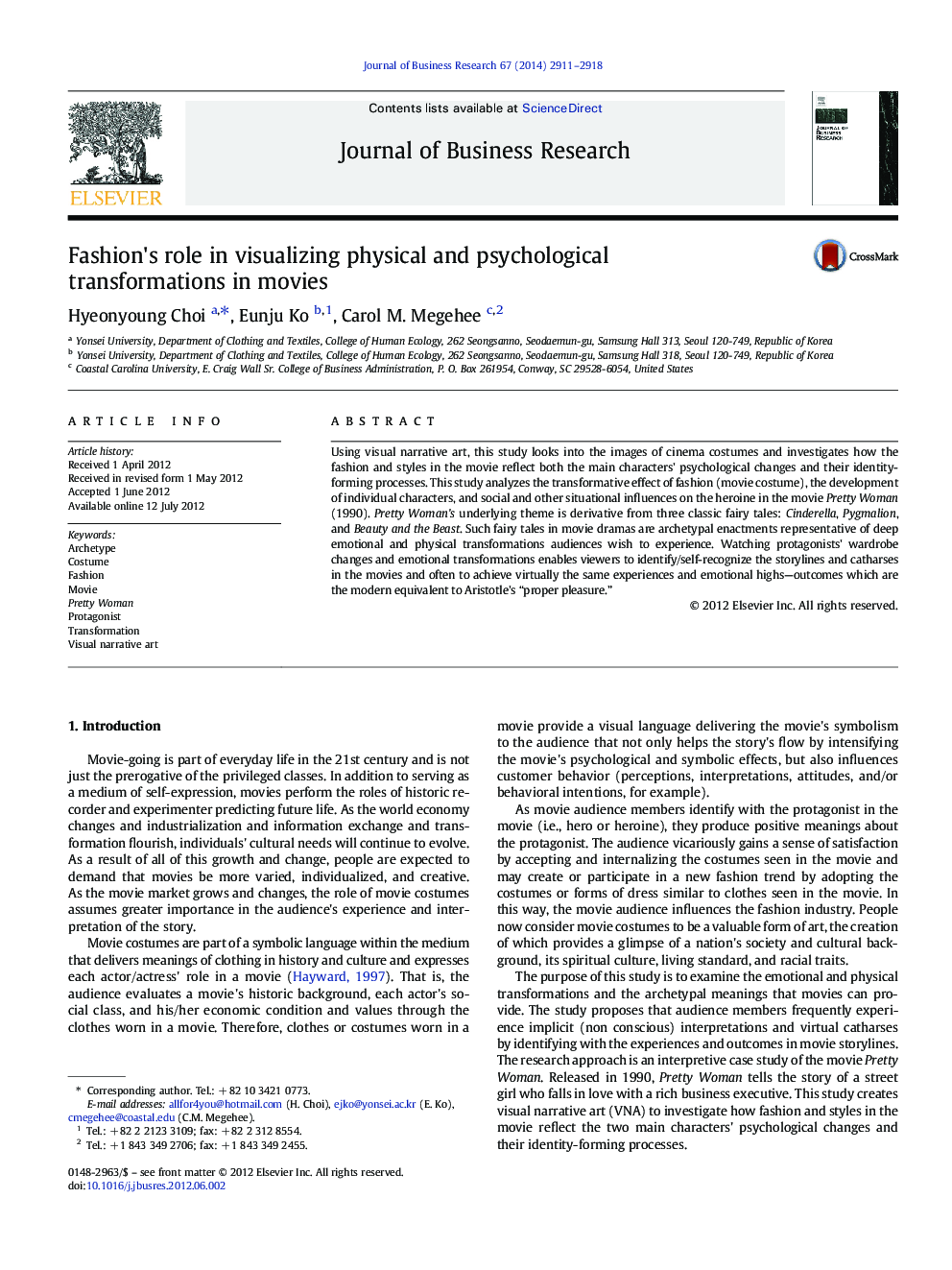| Article ID | Journal | Published Year | Pages | File Type |
|---|---|---|---|---|
| 1017608 | Journal of Business Research | 2014 | 8 Pages |
Using visual narrative art, this study looks into the images of cinema costumes and investigates how the fashion and styles in the movie reflect both the main characters' psychological changes and their identity-forming processes. This study analyzes the transformative effect of fashion (movie costume), the development of individual characters, and social and other situational influences on the heroine in the movie Pretty Woman (1990). Pretty Woman's underlying theme is derivative from three classic fairy tales: Cinderella, Pygmalion, and Beauty and the Beast. Such fairy tales in movie dramas are archetypal enactments representative of deep emotional and physical transformations audiences wish to experience. Watching protagonists' wardrobe changes and emotional transformations enables viewers to identify/self-recognize the storylines and catharses in the movies and often to achieve virtually the same experiences and emotional highs—outcomes which are the modern equivalent to Aristotle's “proper pleasure.”
